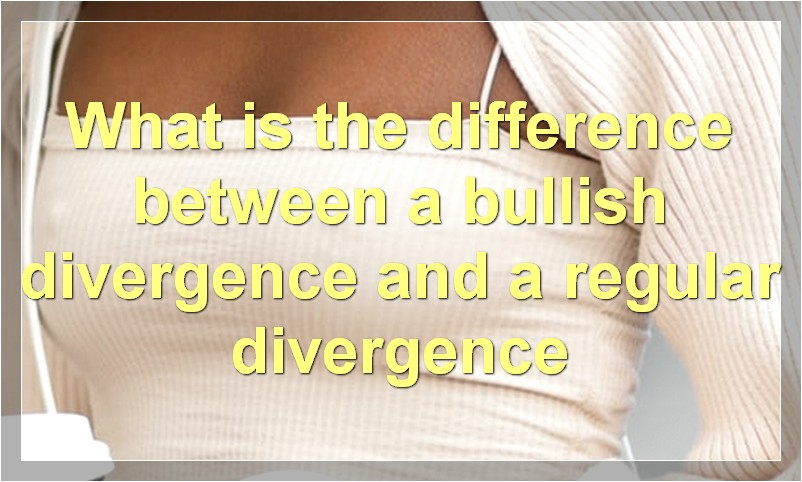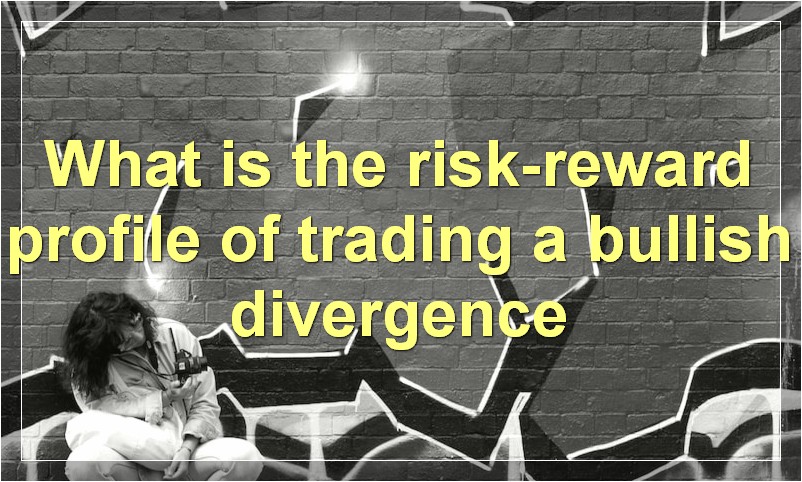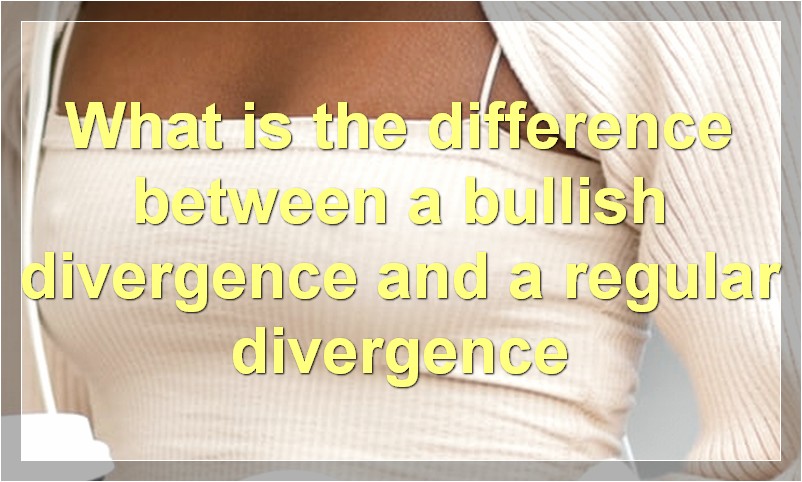If you’re looking for a trading strategy that will give you an edge in the market, you can’t go wrong with bullish divergence. In this guide, we’ll show you how to identify and trade bullish divergences like a pro.
What is a bullish divergence
A bullish divergence is a technical indicator that occurs when the price of an asset is making new lows while the corresponding indicator is failing to make new lows. This discrepancy between price and indicator can be used to signal that a reversal may be imminent.
Divergences are often used in conjunction with other technical indicators to confirm reversals. However, they can also be used as standalone signals. Bullish divergences tend to be more reliable when they occur after a prolonged period of downward price action.
There are two main types of bullish divergences: regular and hidden.
Regular bullish divergences occur when the price is making lower lows while the indicator is making higher lows. This pattern can be seen on a variety of indicators, including MACD, RSI, and stochastic oscillators.
Hidden bullish divergences occur when the price is making higher highs while the indicator is making lower highs. This pattern can be harder to spot but can be just as effective in signaling a potential reversal.
Whether regular or hidden, all bullish divergences share one common trait: they indicate that buying pressure is starting to build even though the price is still in a downtrend. This type of pressure can eventually lead to a breakout and a reversal of the trend.
What is the difference between a bullish divergence and a regular divergence

The difference between a bullish divergence and a regular divergence is that a bullish divergence occurs when the price of an asset is making lower lows, but the indicator is making higher lows. This shows that the trend might be about to reverse. A regular divergence occurs when the price and indicator are both making new highs or new lows.
What are the conditions necessary for a bullish divergence to occur
A bullish divergence occurs when the price of an asset is making lower lows, while the corresponding indicator is making higher lows. This signals that the downward price momentum is weakening, and that a reversal may be imminent.
There are a few conditions that must be met in order for a bullish divergence to occur:
-The price must be in a downtrend
-The indicator must be diverging from the price (making higher lows while the price makes lower lows)
-The indicator must be showing signs of strength (e.g. rising from oversold levels)
If these conditions are met, then it is possible that a bullish divergence is forming and a reversal to the upside may occur. However, it is important to wait for confirmation before taking any action, as false signals can occur.
What technical indicators are used to identify a bullish divergence
There are many technical indicators that can be used to identify a bullish divergence, but some of the most popular include the MACD, RSI, and Stochastic indicators. These indicators can help to show when the momentum of a stock is about to change direction, which can be a strong signal for traders to enter into a long position.
How do you trade a bullish divergence
A bullish divergence is a technical indicator that occurs when the price of an asset is making new lows while the indicator is making new highs. This often happens before a reversal in the price trend.
There are two ways to trade a bullish divergence:
The first way is to wait for the indicator to make a new high and then buy the asset when it starts to move up.
The second way is to buy the asset when the indicator starts to move up, even if the price is still making new lows.
Which method you use will depend on your risk tolerance and trading style. If you are willing to take more risk, then buying when the indicator starts to move up can lead to bigger profits. However, if you are more conservative, then waiting for the price to start moving up can help you avoid false signals.
What is the risk/reward profile of trading a bullish divergence

When it comes to trading, the risk/reward profile is always an important consideration. And when it comes to trading a bullish divergence, the risk/reward profile can be even more important.
So, what is the risk/reward profile of trading a bullish divergence?
Well, the risks of trading a bullish divergence are that the market may not move in the direction you expect it to, or that the move may not be as strong as you expect. The rewards, on the other hand, are that if the market does move in the direction you expect, it could be a very profitable trade.
Of course, like with any trade, there is no guarantee of success. But if you do your homework and understand the risks and rewards involved, the risk/reward profile of trading a bullish divergence can be very attractive.
What are some common mistakes traders make when trading a bullish divergence
There are a few common mistakes that traders make when trading a bullish divergence. Firstly, they may enter their trade too early before the divergence has fully formed. Secondly, they may not place a stop loss close enough to the recent low, increasing their risk of a loss if the market turns against them. Finally, they may take profits too early and miss out on further gains.
To avoid these mistakes, it is important to wait for the divergence to fully form before entering your trade. Place your stop loss at a level that gives you a comfortable risk/reward ratio, and take profits gradually as the market moves in your favor.
How can you use a bullish divergence to your advantage
When it comes to trading, a bullish divergence can be a powerful tool. Here’s how you can use this technical indicator to your advantage.
A bullish divergence occurs when the price of an asset is making lower lows, but the underlying momentum is making higher lows. This often happens before a price reversal and can be used as a buy signal.
To trade a bullish divergence, look for confirmation from other technical indicators before entering a position. A common strategy is to wait for the price to break above the resistance level that was in place before the divergence formed.
If you’re able to identify a bullish divergence early, it can give you a big advantage in the market. Stay alert and be ready to take action when this pattern forms.
What are some things to keep in mind when trading a bullish divergence
When trading a bullish divergence, there are a few things to keep in mind. First, price action tends to lead indicator action, so pay attention to how price is behaving. Second, bullish divergences often occur at key support levels, so be on the lookout for areas where the market may be poised for a bounce. Finally, don’t get too caught up in the details – sometimes the big picture is all you need to trade successfully.
What are some common traps traders fall into when trading a bullish divergence
There are a few traps that traders can fall into when trading a bullish divergence. The first trap is to enter the trade too early. The second trap is to not give the trade enough room to move and the third trap is to exit the trade too early.

